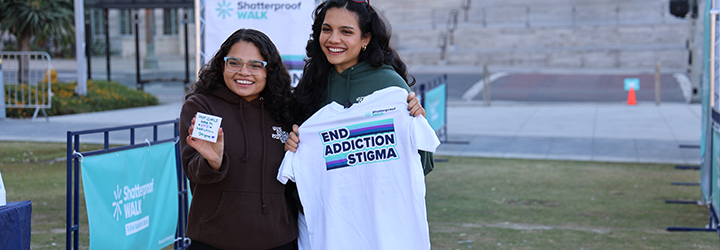Unshame CA uses personal stories to drive measurable changes in beliefs and attitudes toward addiction
|
SACRAMENTO — Nearly a year into a public health awareness campaign aimed at breaking down the stigma of addiction and increasing awareness of treatment accessibility among Californians, evaluation data shows that people are more likely to change their views on addiction after seeing and engaging with compassionate, community-driven stories of individuals impacted by substance use disorders (SUDs). The campaign – Unshame CA – is a collaboration between the California Department of Health Care Services (DHCS) and Shatterproof to build an understanding of and normalize a SUD as a treatable medical condition. The campaign uses an evidence-informed public health approach to leverage social media for education and outreach and connect Californians to people with lived experience. DHCS and Shatterproof launched Unshame CA in May 2023. “As Californians adjust to the current landscape of substance use, stigma remains a key barrier in prevention, intervention and treatment,” said State Medicaid Director Tyler Sadwith. “While the opioid epidemic has deeply impacted the State of California, the state is making gains in breaking down the stigma of addiction and increasing awareness of treatment accessibility.” “Stigma precludes many people from seeking treatment, creates social isolation, and prevents the use of lifesaving medications,” said Senior Vice President for the Shatterproof National Stigma Initiative, Courtney McKeon. “The Unshame CA campaign is informed by community members. Through their stories, the campaign strives to inspire hope and compassion, remove barriers to care, and decrease the number of preventable deaths due to substances.” CAMPAIGN RESULTS: In just one year, Unshame CA demonstrated a sizeable reach, with nearly 11% of adult Californians — more than 3 million people — reporting exposure to the campaign in its first year. Among key findings of the campaign evaluation:
Unshame CA was particularly successful in reaching California’s Spanish-speaking community. With consideration for California’s culturally and linguistically diverse population, Unshame CA developed campaign content to reach hundreds of thousands of Spanish-speaking Californians. In an evaluation of Spanish-language media users:
Overall, Unshame CA is associated with lower levels of public stigma — specifically, social distance (both homelife and workplace) from a person with an OUD, attitudes and beliefs, or a willingness to interact with a person with an OUD. The data from the Unshame CA campaign is also especially encouraging for increasing education, awareness, and access to treatment and harm reduction initiatives within local communities. Those exposed to the campaign are more confident that they can find treatment for an OUD, know where to find and how to use naloxone in the event of an overdose, and are more willing to have safe consumption sites and clinics providing medication for OUD treatment in their neighborhoods. More than 36% of campaign respondents indicated they knew how to administer naloxone compared to 20.3% of non-exposed respondents. Finally, 63.4% of campaign-exposed Californians are willing to have a clinic providing medication for OUD in their neighborhood compared to 43.3% of non-exposed Californians. One respondent indicated that the campaign motivated them in their recovery because it demonstrated the resilience of the human heart and helped them realize their purpose of helping others who still face challenges and stigma. THE CAMPAIGN'S REACH: The campaign engaged 77 community organizations and partnered with 40 digital influencers, including celebrity actor, singer, dancer, and producer, Lance Bass. Additionally, the campaign collected 44 stories of Californians impacted by SUDs and achieved more than 67 million social media impressions and more than 9.5 million social media engagements. Most respondents saw the campaign via Facebook and YouTube, and more than a third who saw the campaign engaged in some type of campaign activity, such as visiting the Unshame CA website or watching a story video. WHAT COMES NEXT: Now in its second year, the campaign aims to reach more Californians with a continued focus on reducing social distance stigma and traditional prejudice as well as expanding content to address stigma against Medications for Addiction Treatment (MAT). Additionally, the campaign will work to further relationships with community-based organizations to ensure proper framing of harm reduction tools and resources to reach more people. Join #TogetherToEndStigma by following @UnshameCA on Facebook and Instagram or visiting UnshameCA.org. # # #
|

